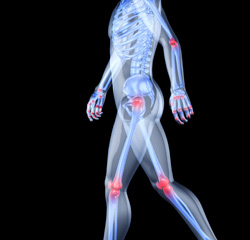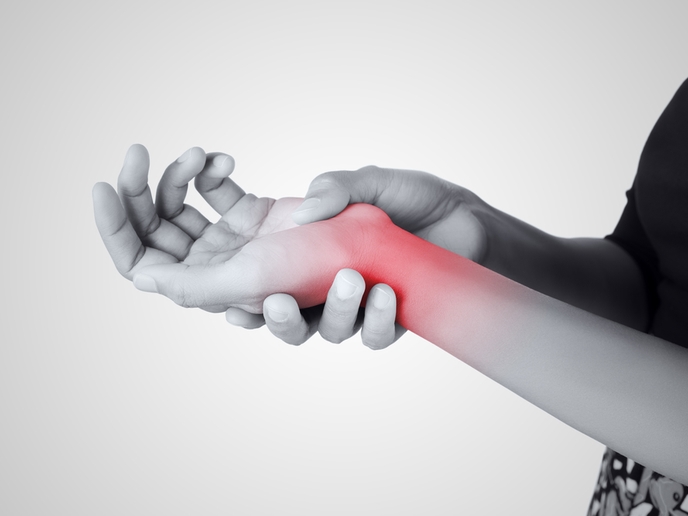Reducing inflammation-induced pain
Arthritis and rheumatic diseases cause inflammation in the joints and bones, which brings on stiffness, swelling and the most severe symptom: pain. Efforts to find ways of relieving pain and the limitations that present with acute local inflammation have shown that lipid mediators can function as 'braking signals' in inflammation. Two such mediators are lipoxins and resolvins. It has been found that spinal delivery of lipoxins can ease inflammation-related pain without changing the peripheral inflammatory state. The Inflammationpain project aims to discover if resolvins also have this ability. Nociception is the process whereby a signal is sent through the spine to the brain when pain receptors are alerted to stimuli that can damage tissue. Project partners are expanding on prior research to study the anti-nociceptive effect (i.e. reduction in sensitivity to pain) in a model of chronic inflammation. A rheumatoid arthritis model was chosen as most suitable for this purpose. Inflammationpain researchers have focused on the role of lipoxins and resolvins in pain-inducing mechanisms in a carrageenan (red seaweed) model, a collagen-antibody–induced arthritis (CAIA) model and in cell cultures. Studies so far show that resolvin E1 (RvE1) and resolvin D1 (RvD1) assuage inflammatory pain in both passing and long-lasting models of pain. These mediators therefore have potential as novel pain-relief drugs. Receptors for RvD1 and lipoxins were found to be exclusively expressed on spinal astrocytes, while the RvE1 receptor (ChemR23) is only expressed on neurons. This was verified in assessments of mice, rats and human tissues and cells. The findings indicate that RvD1 and lipoxins soothe pain transmission through mechanisms that are distinctly different from the mechanisms that RvE1 operates on. Going forward, the Inflammationpain team expects to discover if lipoxins and resolvins are formed endogenously in conditions of inflammatory pain, and to complete full characterisation of the pain-relieving characteristics of these substances. By providing more knowledge on how spinal sensitisation and inflammatory pain are regulated, new drug targets for chronic inflammatory pain can eventually be identified.







